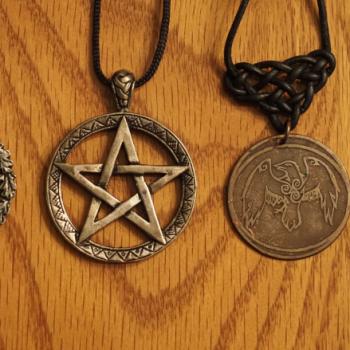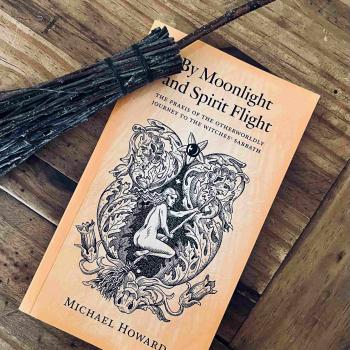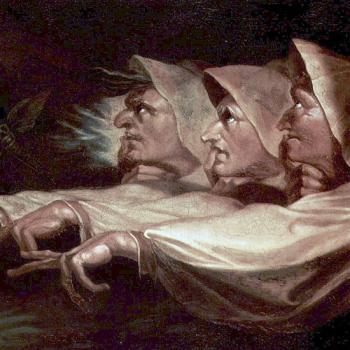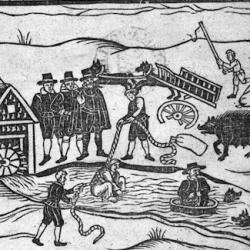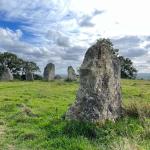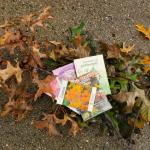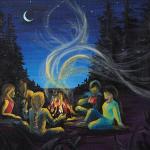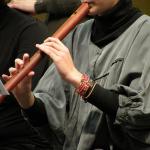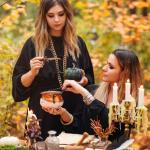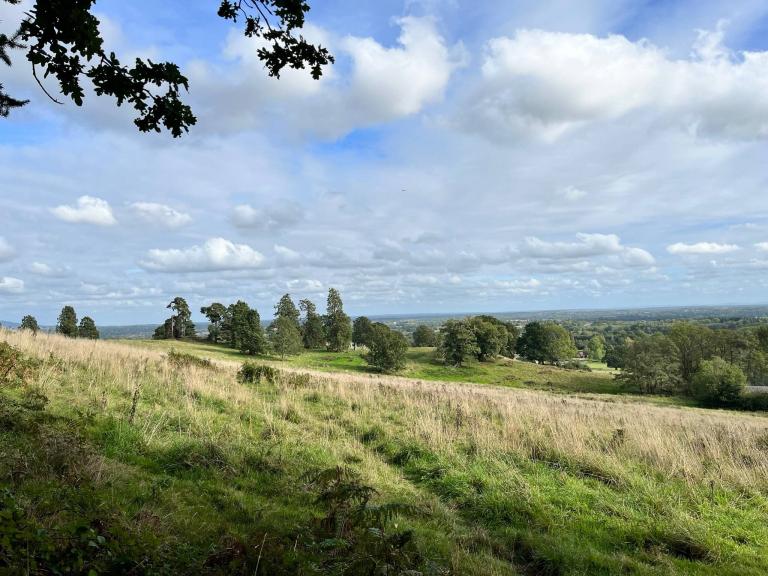
Exploring local folklore and landscape can reveal many things, not least of which is an adventure into the enchantment of the world, touching history and local tradition. Often, we allow our everyday lives to govern our actions and thoughts and we become creatures of habit, following the same routes and patterns of behaviour. This inevitably means that we can move about our days and miss those opportunities for entering the mythic and enchanted world that lies just within a breath of our own reality. Recently, I took the occasion to venture out into my local area to explore some of its rich texture and history, to find those spirits whom I had perhaps forgotten, or passed by.
The county of Surrey, lying close by southwest London, is in many ways today an offshoot of its dominant city neighbour. Often, it is the “country” to which wealthy city workers, bankers and politicians retreat or have their home when not in the capital – increasing the cost of everything by 15% on average compared to the rest of the country!
Given the proximity to London, as well as the Anglo-Saxon kingdom of Wessex, one would imagine that Surrey converted to Christianity early on in the medieval period after the Roman departure from Britain but, surprisingly, this couldn’t be farther from the truth. Indeed, it is believed that paganism officially persisted until some time around 675AD and the founding of Chertsey Abbey, nearly a decade after the Synod of Whitby in 664.
An area of Surrey that held onto its former beliefs a lot longer than most others is the land now named for the Godhelm Ingas, or people of the chief Godhelm — Godalming. Indeed, nearby toponyms indicate that a selection of Saxon and pre-Christian sacred sites are scattered throughout the Godalming Hundred (an Hundred was an administrative, judicial and/or military division of Shires in England). These include the village and heathland of Thursley (the field of Thunor/Thor) and Tuesley (the field of Tiw – Týr in Old Norse). This last is most interesting as the shrine to Tiw was replaced, with the advent of Christianity, with a chapel dedicated to the Virgin Mary. A holy well, or spring, also gave its name to the convent subsequently built close by — Ladywell. The remains of the Saxon chapel, along with the previous shrines to Tiw, have since vanished from the landscape but the shrine remains open for visitors everyday of the year. Except, that is, for one day of which there is a curious and persistent ban from public gathering that remains extant to this day: the 21st December. This fascinating detail might be interpreted as a reminder of the longstanding custom of local folk to gather to mark a forgotten god from a forgotten land and a forgotten time. Indeed, the very prohibition speaks apophatically to evoke by summoning that which it talks around.
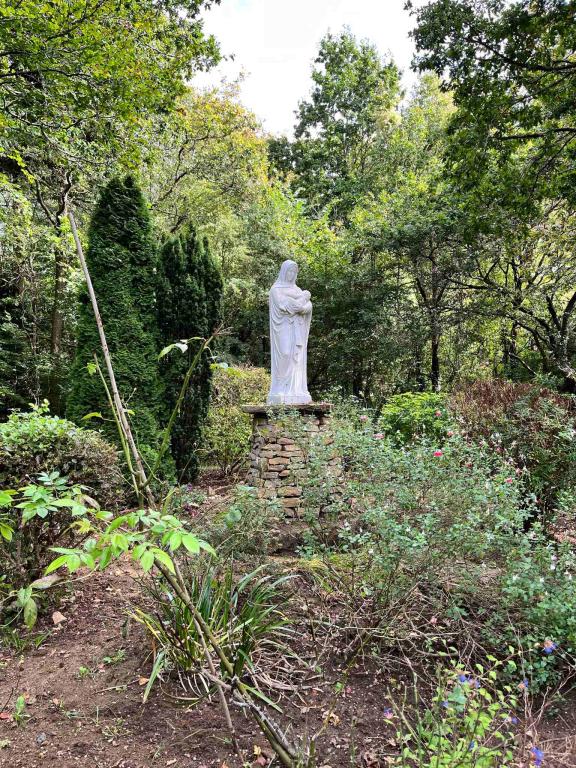
During a recent visit to the site of Mary’s shrine, which remains accessible through footpaths and woodland, we stood on the land once held sacred by our forebears who revered a different god on this site, and a distinct raven flew atop a distant high tree, directly in the north. Cawing mournfully, emitting low coos of sadness, we watched through the branches until it took flight directly overhead, the sound of its wings beating the air above. Travelling due south, it vanished into the thick canopy of oak and yew, its presence met with another, hidden, sound as its partner responded with their own caw. Silently watching and listening, we became aware that we had been between two ravens in the north and south, and pondered which of Huginn and Muninn – Odin’s ravens – we had witnessed moving from the place of power and spirit in the north through to the gate of middle earth in the south, and what such omen portends.
As the Godhelm Ingas made their way along the river Wey toward their final settlement, another landmark that they would have passed by, and caused some consternation, is Hascombe Hill. Hascombe Camp is a multivallate – having multiple ramparts – hill fort occupying the crest of the hill, providing a fortified settlement from around the 1st century BC, and inhabited again toward the end of, or just after, the Roman occupation – circa 410AD.
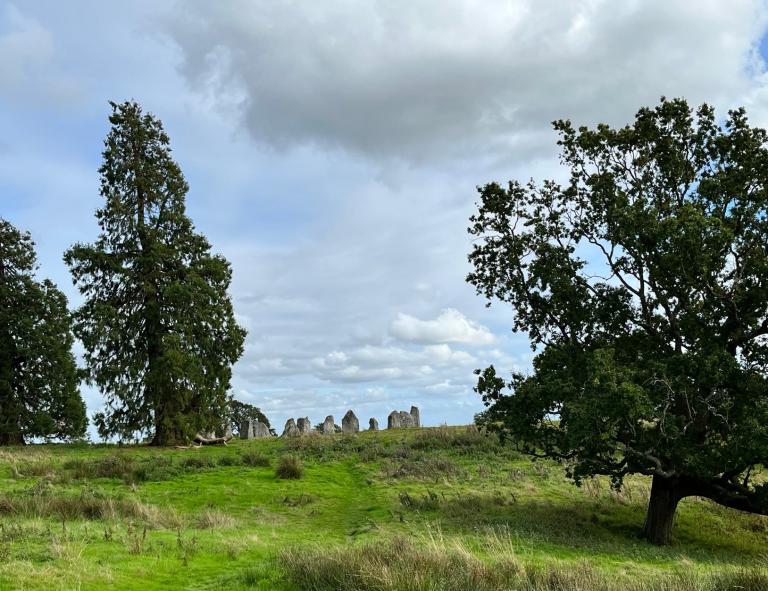
The name Hascombe is tantalising as it is a strange compound, originating from two different languages that mark a sharp change of society in Britain after the withdrawal of Roman administration. The suffix -combe, derived from ‘cym’, is pre-Saxon and survives in modern Welsh language and means simply valley — this is an obvious geographical valley between two large and prominent hills. The first part of the name, however, comes from hægtesse, the Saxon word for ‘witch’. This means that the name Hascombe translates roughly as ‘Valley of the Witch’, via two distinct languages. The suggestion has been made, therefore, that native Britons resisted Anglo-Saxon incursion and persisted in the area, using the original fortified settlement atop the hill, and proved a formidable opponent to occupation by the Godhelm Ingas. Perhaps the Britons who occupied the vantage point used a particular magic, or had a powerful sorceress(es) who harried the newcomers as they advanced across westward. We will never truly know, being teased by archaeology and toponyms that hint at a fascinating name, a relic of two peoples that leaves only suggestion and imagination.
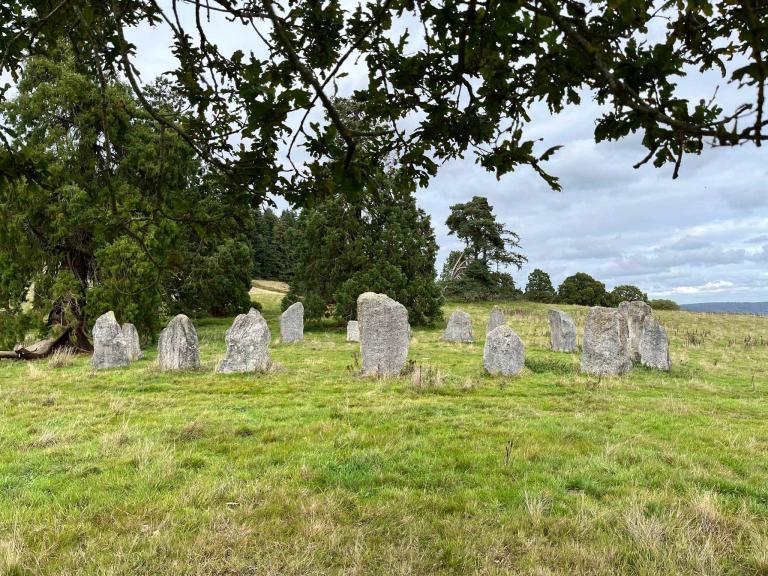
Between August 1998 and October ’99, a group under the stewardship and direction of the modern druid Ivan MacBeth erected a stone circle – Dragonstone – on a spit of land upon Hascombe Hill. In doing so, only ancient methods of construction were employed, including manpower, timber and levers to manipulate the stones into their carefully selected resting places. The circle consists of eighteen stones, averaging a weight of 9 tons each, and are arranged to mark solar and lunar rising and setting points throughout the year. As Surrey couldn’t muster suitable stones for the project, these were sourced from Portland, “a quasi-island off the south coast of Dorset” [1]. Sadly, Ivan passed on the 23rd September 2016 – a great loss, but a legacy that has left an indelible mark through stone circles he built.
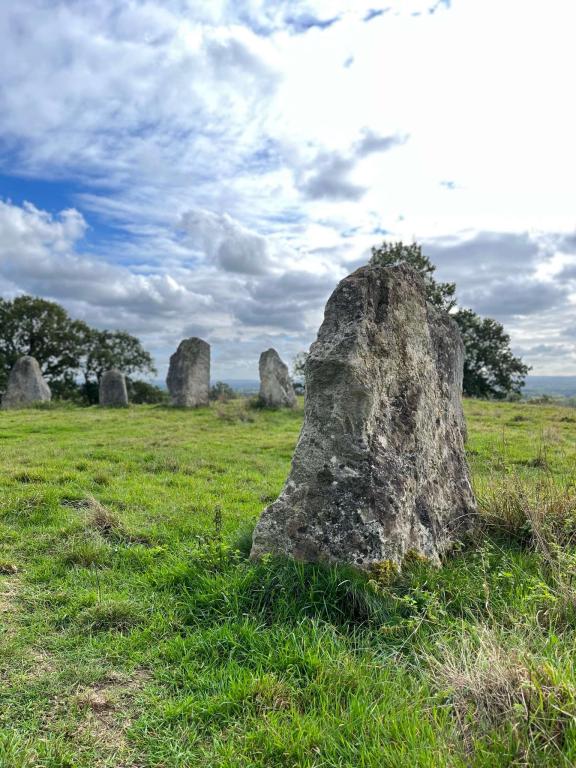
Walking through the farisee [2] haunted woodland that circles Hascombe Hill, toward the Dragonstone circle, it is easy to get lost in the Tolkienesque atmosphere. During a recent visit, upon the return journey from the stones, a sudden thump against the sole of my foot revealed a toad who had been basking in the dappled light, amongst the leaf litter of the footpath. Unwittingly, my footfall was destined for their resting place until it leapt into action, causing me to leap out of my skin. Pondering this encounter with the liminal creature of witch-lore and diablerie, our trek was met with a passing wanderer approaching in the opposite direction. This same journeyman had been encountered at the identical location, of broken branches and bracken, on the outward journey again contrawise to our direction of travel. With a whiff of wax and the outdoors, this gentleman was entirely earthen in colour, blending naturally with the early autumn leaves, dirt and tree bark, wearing an archaic waistcoat and not a piece of modern ware except for a white portable coffee cup in his hand. Wistfully, I mused that he may have been one of the Gentry [3], imagining the ribbons, glass flowers and trinkets that he may have held in his rucksack. Looking back at the man, it occurred to me that I didn’t recall hearing him speak as we exchanged courtesies – I had the thought that he had, but no memory of him doing so.
We all have access to such moments in our lives when we move through a world enchanted, touched by the potentiality of something other than it appears. Wondering when we may have encountered the Good Folk in our lives and not recognised such encounters, we returned to the car and retired to a nearby pub, the aptly named Sun Inn.
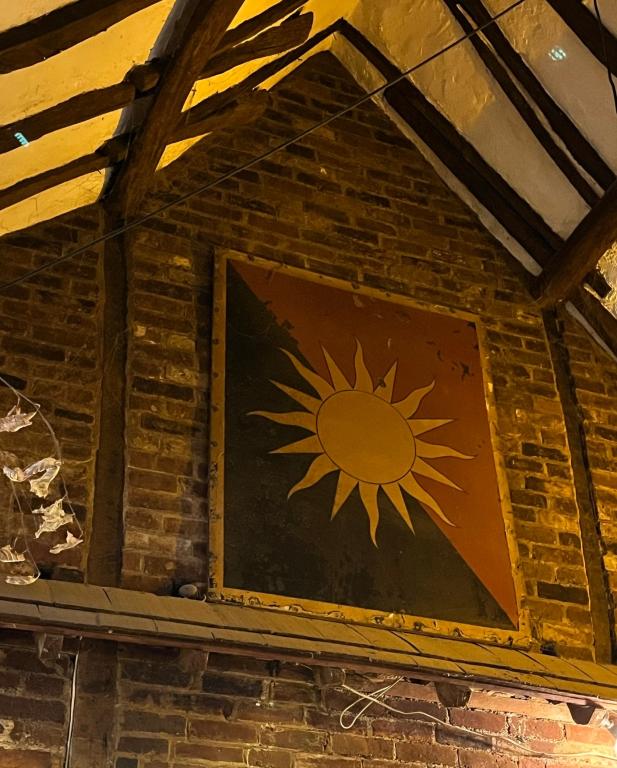
Footnotes:
[1] https://web.archive.org/web/20160623050748/http://www.ivanmcbeth.com/stone_circles_i_built.html [2] Surrey dialect traditionally enjoys a reduplicated plural, as in toeses, hatses, or fairieses. From this latter, which sounded to educated folklorists, like ‘pharisees’ – under the assumption that simple folk were confusing the Biblical Pharisees – we get the local dialect form of fairies. [3] Gentry is another term for fairies locally, and preferred when in earshot due to the belief that fairies dislike that name.



